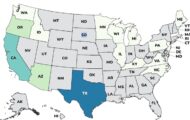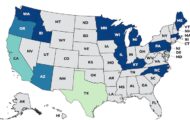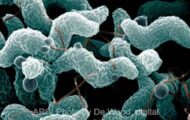A major five year research study is looking at E. coli bacteria in beef and how to control it in the food supply. The University of Nebraska-Lincoln is heading up the study, along with scientists at Kansas State University and other institutions such as New Mexico State University and the University of California-Davis. Shiga toxin-producing E. coli (STEC) bacteria cause serious illnesses, including hemolytic uremic syndrome, in hundreds of thousands of Americans every year. Of the 500 known STEC bacteria, 100 can cause human disease.
 The 5-year study involves 48 scientists from 11 land-grant universities and other institutions who are conducting integrated research on the eight types of STEC bacteria. Chavonda Jacobs-Young, acting USDA National Institute of Food and Agriculture said, “Shiga toxin-producing E. coli are a serious threat to our food supply and public health, causing more than 265,000 infections each year. As non-0157 STEC bacteria have emerged and evolved, so too must our regulatory policies to protect the public health and ensure the safety of our food supply. This research will help us to understand how these pathogens travel throughout the beef production process and how outbreaks occur, enabling us to find ways to prevent illness and improve the safety of our nation’s food supply.”
The 5-year study involves 48 scientists from 11 land-grant universities and other institutions who are conducting integrated research on the eight types of STEC bacteria. Chavonda Jacobs-Young, acting USDA National Institute of Food and Agriculture said, “Shiga toxin-producing E. coli are a serious threat to our food supply and public health, causing more than 265,000 infections each year. As non-0157 STEC bacteria have emerged and evolved, so too must our regulatory policies to protect the public health and ensure the safety of our food supply. This research will help us to understand how these pathogens travel throughout the beef production process and how outbreaks occur, enabling us to find ways to prevent illness and improve the safety of our nation’s food supply.”
UNL scientist Dr. Rod Moxley is the project director. He said, “The long-term goal is to reduce the occurrence and public health risks from Shiga toxin-producing E. coli in beef, while preserving an economically viable and sustainable beef industry. This can only be accomplished by a multi-institutional effort that brings together complementary teams of the nation’s experts whose expertise spans the entire beef chain continuum.”
Two years into the research, progress is being made, according to Dr. Randy Phebus at Kansas State University. There are five main objectives in the research. Scientists are trying to improve detection capabilities and studying how the pathogenic bacteria are transferred to meat. Phebus is examining intervention techniques to control E. coli. His team is researching pre-harvest, post-harvest, and consumer level controls and how well they work against new strains of E. coli.
One of the new strategies is using electrostatic spray technology to apply antimicrobial treatment on the carcass instead of high-volume washes. This lets processors use less water and fewer chemicals to reduce the bacterial load. The scientists are also following the bacteria’s progress from the animal through processing stages.
The fourth objective is to gather all the data to quantify and predict how well intervention and control techniques work. And the fifth objective will be informing the public about their findings. Reducing the risk of E coli in foodservice and consumer areas involve education and behavioral studies.




